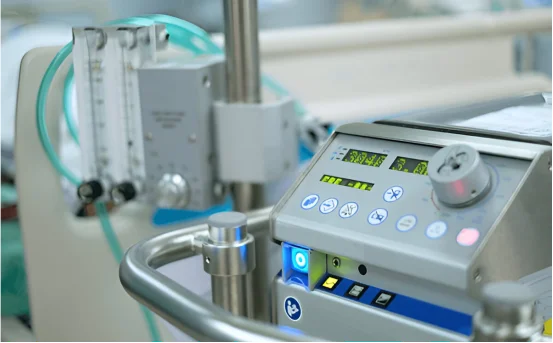Head and neck cancers encompass a wide range of malignancies that affect areas such as the throat, larynx, nose, sinuses, and mouth. Surgery is one of the primary treatment options, especially when the cancer is localized and operable. Understanding the types of head and neck cancer surgery can help patients and caregivers make informed decisions and prepare for what’s ahead.
Understanding Head and Neck Cancer
Head and neck cancers generally begin in the squamous cells that line the moist, mucosal surfaces inside the head and neck. These include:
- Oral cavity
- Pharynx (throat)
- Larynx (voice box)
- Nasal cavity and sinuses
- Salivary glands
The choice of surgery depends on the location, size, stage, and spread of the cancer, as well as the patient’s overall health and functional considerations such as speech, swallowing, and appearance.
Goals of Surgery
Surgery for head and neck cancer aims to:
- Completely remove the tumor
- Prevent recurrence
- Preserve as much normal function as possible
- Reconstruct any defects caused by tumor removal
Surgical treatments often work in combination with radiation therapy and/or chemotherapy, especially in advanced stages.
Major Types of Head and Neck Cancer Surgery
Tumor Resection (Primary Tumor Surgery)
This is the most common form of surgery where the primary tumor is removed. Depending on the tumor’s location, this surgery can vary greatly:
- Glossectomy :- Removal of part or all of the tongue.
- Laryngectomy :- Removal of part or all of the larynx (voice box).
- Pharyngectomy :- Removal of part of the pharynx (throat).
- Mandibulectomy :- Partial or total removal of the jawbone if it is affected.
- Maxillectomy :- Removal of part or all of the maxilla (upper jaw).
- Parotidectomy :- Removal of the parotid gland in cases of salivary gland cancer.
Surgeons often use traditional open surgery, but in select cases, minimally invasive techniques are used.
Neck Dissection :- When cancer spreads to the lymph nodes in the neck, a neck dissection is performed to remove affected lymph nodes and surrounding tissues. There are several types of neck dissection:
- Radical Neck Dissection :- Removal of nearly all lymph nodes from one side of the neck, along with muscles, nerves, and veins if necessary.
- Modified Radical Neck Dissection :- Similar to radical but preserves some structures such as nerves or blood vessels.
- Selective Neck Dissection :- Only certain groups of lymph nodes are removed, minimizing side effects and preserving function.
This procedure helps determine how far cancer has spread and can prevent further metastasis.
Endoscopic and Minimally Invasive Surgery
Technological advancements have introduced less invasive surgical options:
- Transoral Robotic Surgery (TORS) :- Uses robotic arms to access tumors in hard-to-reach areas like the base of the tongue or throat, minimizing external incisions.
- Endoscopic Surgery :- Involves inserting an endoscope (a thin tube with a camera) through the nose or mouth to remove tumors with specialized instruments.
Benefits of minimally invasive surgery include faster recovery, less scarring, and fewer complications.
Laser Surgery :- Laser surgery involves using a highly focused beam of light to cut or destroy cancerous tissue. It is most commonly used in early-stage cancers of the larynx or vocal cords.
Laser surgery can:
- Preserve vocal function
- Be performed on an outpatient basis
- Reduce the need for extensive reconstruction
However, it’s generally reserved for smaller, accessible tumors.
Reconstructive Surgery :- After major tumor removal, patients may require reconstructive surgery to restore appearance and function. This includes:
- Free Flap Reconstruction :- Tissues from another part of the body (such as the forearm, thigh, or chest) are used to rebuild areas of the head and neck.
- Skin Grafts :- Thin layers of skin used to cover wounds or surgical sites.
- Dental and Jaw Reconstruction :- Especially after mandibulectomy or maxillectomy, to allow for speaking and chewing.
- Voice Prostheses :- Implanted devices to help restore speech after laryngectomy.
Reconstruction is a critical part of recovery, helping to improve the quality of life.
Preparing for Surgery
Surgical preparation involves:
- Physical evaluation and blood work
- Imaging scans (CT, MRI, or PET)
- Dental assessments
- Nutritional evaluation
- Consultation with a speech or swallowing therapist if needed
Patients may also be advised to quit smoking, improve diet, and manage underlying health conditions to reduce surgical risks.
Risks and Side Effects
While surgery is often life-saving, it comes with potential risks:
- Pain and swelling
- Infection or bleeding
- Speech or swallowing difficulties
- Changes in appearance
- Nerve damage (leading to numbness or weakness)
- Breathing difficulties (especially after laryngectomy)
Side effects can be temporary or permanent, depending on the procedure and tumor location. Rehabilitation is crucial for long-term recovery.
Recovery and Rehabilitation
Recovery varies by the type and extent of surgery. Hospital stays may range from a few days to several weeks. Post-operative care often includes:
- Pain management
- Physical therapy
- Speech and swallowing therapy
- Nutritional support (tube feeding may be needed temporarily)
- Emotional and psychological counseling
Patients are usually monitored closely for signs of recurrence and side effects of any additional treatments.
Life After Surgery
Many patients go on to live fulfilling lives after surgery. Support groups, survivor communities, and counseling services can provide invaluable emotional support. Reconstructive surgery, prosthetics, and voice rehabilitation greatly enhance quality of life.
Advances in surgical techniques continue to improve outcomes, offering more targeted treatments with fewer complications.
Conclusion
Head and neck cancer surgery is a complex but often necessary step toward healing. The right surgical approach depends on individual factors, and a multidisciplinary team—including surgeons, oncologists, radiologists, and rehabilitation specialists works together to offer the best possible care.
If you or a loved one is facing head and neck cancer, understanding your surgical options can empower you to make informed, confident decisions. Always consult with a head and neck cancer specialist to explore the best treatment plan tailored to your needs.























